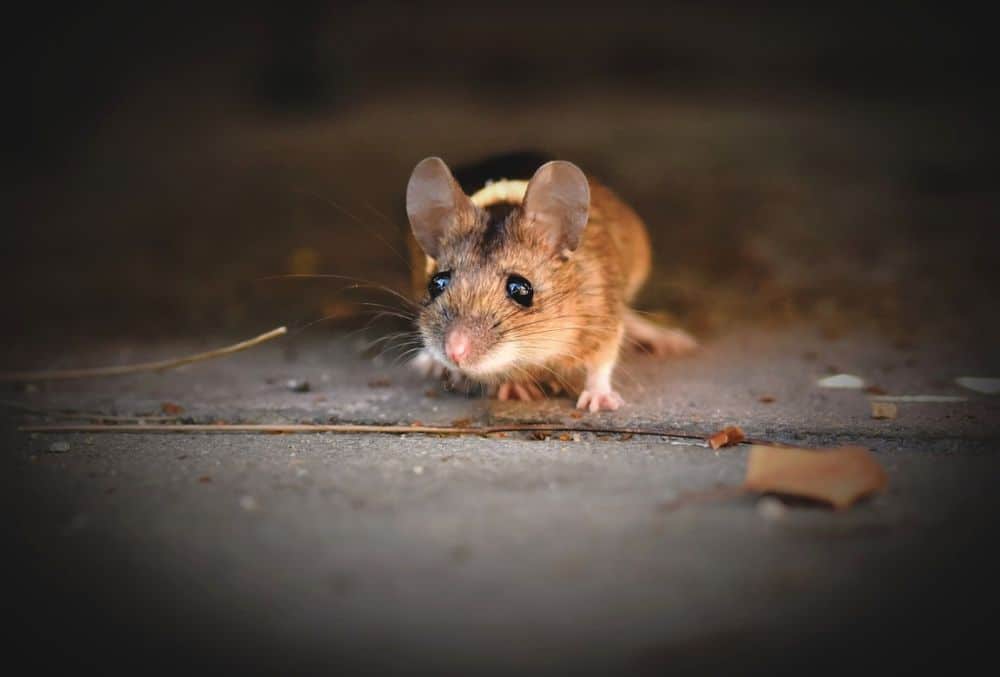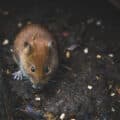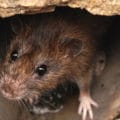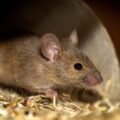Table of Contents
Rats are your home’s most common, annoying, and dangerous rodents. They take every chance to enter your home, bringing diseases and significant damage. An infestation only needs a few rats to start. It is hard to get rid of them once they come in, especially if you have a large house with complex architecture.

The best solution is to eliminate the chances of an infestation. So how do you prevent this? How do rats get in your house?
This article answers the question. It also shares what you can do should you fail to keep them out.
What Attracts Rats to Your House?
Many households, at some point, report a rat infestation. These houses tend to share certain characteristics, despite geographical location differences. These characteristics are listed below.
Search for Food
Rats will eat just about any food, and even non-food items. Therefore, your home is a prime target because of its endless supply of food, leftovers, and garbage. Your yard is the first entryway, serving up vegetables, fruits, nuts, seeds, and grains from the foliage. You most likely leave your garbage bins outside, a great source of nourishment for the vermin. A poorly maintained yard encourages their advances, and they will soon be inside your house. They will eat up dropped food particles, spills, uncovered leftovers, etc.
Also, your pet’s food, even the insects in your house, won’t be spared. Rats will eat smaller insects in the house. Therefore, ants, cockroaches, and other insects will sustain them as they look for other food sources.
Seeking Shelter
Rats are warm-blooded animals who seek warmth, especially in the cold seasons. Therefore, expect more interest in your home from rats this winter. Rats take advantage of the heat in your house to raise their litter and access food. Your fireplace, attic, wardrobe, kitchen cabinets, and rarely-used drawers are cozy spots for rats. Expect to also find rats along your HVAC system pipes when you heat your home during winter.
Water Sources
Rats also need water for survival. Therefore, leaky pipes, puddles in your yard, pet bowls, broken sinks, and other areas in your home make attractive spots. They can access the tiniest sections of your house, squeezing through concrete, timber, and other structural components. Therefore, leaky pipes in those deep sections of your home will comfortably provide a steady water supply.
Indoor Plants
Rats may also come after your house plants, not just what you may have in your yard. Your indoor potted plants provide food, water, and shelter, especially if you have plenty. Dedicating a section of your living room or balcony for plants is an ideal infestation location. The twigs and leaves provide excellent nest raw materials.
Dirt
A poorly organized and unhygienic house is attractive to rats. The chaos is a perfect cover for their presence, adequate shelter for their litter, and a great food source. Dirt and debris protect them from cats and other larger animals that might hunt them. This is why a neglected attic is always full of rats. The space has many attractive qualities to sustain a rat’s daily life.
How Do Rats Get in Your Attic
Rats get into houses through several avenues, some obvious and others surprising. Before discussing those avenues, it is important to note that most people wrongfully assume that rats won’t bother with a clean house. Keeping a house clean only means rats will come looking for other things apart from dirt. Therefore, you need to consider a proactive approach. Let us look at those avenues to guide your actions.
Vents
Vents in your house’s structure provide excellent entryways and hiding spots. Rats will come into the house through vents and use them for nesting. Since you rarely ever check your ducts, if, at all, those spots are safe for raising a litter. You may assume these entry points are too tiny, but rats can squeeze through surprisingly smaller spaces.
Cracks in Walls
Rats only need a half-inch crack on your house’s wall or foundation to squeeze through. Once inside, they will head for other spots, such as the vents, between walls, closets, and cupboards. The cracks in often overlooked areas of the house are especially great since you won’t notice or disturb them.
Structural Imperfections
Rats will use such areas to come in if your house has small spaces between windows, a large slit under the door, or other imperfections. This is especially common when it gets cold outside as the rats are motivated to seek shelter. Broken window panes and other damaged sections also make for excellent entryways.
Holes in the Roof
Rats can also take an aerial approach, climbing trees next to your house and fishing for holes in the roof. This explains why your attic is filled with rat nests. The space is ideal since you don’t often go there, and the holes are invisible from that angle.
Chimney
Your chimney provides an excellent entryway, as rats don’t have to struggle to get in. All the rats need to do is get up there and then come down the shaft. Since fireplaces are only used seasonally, with some purely for cosmetic purposes, the vent is also an ideal nesting location.
Doors
Open doors and windows are also easy entryways for rats. For example, leaving your kitchen door open for long periods attracts rats from the yard. Their heightened sense of smell keeps them close, and they will sneak in for food and shelter when an opportunity arises.
Packages
Although not a common entryway, bringing in a package containing rat litter is one way to host an infestation. Some packages may already be infested, so if you bring one to your house, you’ll accidentally bring trouble into your home.
Vegetation
This is especially common for houses with crawling plants on the outside walls. Rats will climb those vines and look for cracks, open windows, or other spaces in your home.
How to Prevent Rats From Getting Inside Your House
The best solution to keep your house rat-free is to eliminate their needs and seal off entryways. Here are some practical solutions.
Remove Food Sources
The first step is to make your house as unattractive to rodents as possible. Food is their primary motivation to come knocking, and some basic hygiene and housekeeping should significantly mitigate the situation. Start by cleaning the area around your garbage bins and disposing of trash properly. Next, store all leftover food properly. This means covering it well and storing it in either cupboards or the fridge. Next, clean up well after eating. Food crumbs, spillage, and other droppings attract rats and smaller vermin, thus compounding the situation. You must also clean your yard, removing all dropped fruit, twigs, leaves, and other unwanted foliage.
Seal All Holes
You need to repair all cracks, seal all vents, and repair the roof to prevent rats from squeezing into the house. Additionally, check whether there are structural defects like excess space under the door or windows. Eliminating such entry points minimizes the risk of infestations.
Declutter the House
Apart from a dirty house, rats love an overstuffed one. Therefore, you must stop hoarding stuff you don’t need and declutter all rooms. For example, you need to remove old clothes and furniture from the attic and give it away or dispose of them some other way. When boxes pile up until you can’t see the floor or walls, chances are rodents live in there.
Repair Your Plumbing
Another key entry point is the cracked water and HVAC system piping and vents. These also present a conducive nesting environment due to the access to water. Therefore, schedule an assessment of all those areas and have all repairs done. You’ll greatly minimize the entry and nesting chances.
Trim the Hedges
To eliminate this entryway, you must also minimize foliage growth so close to your house. Rats climb through tall trees and creep vines into your home through cracks, open windows, or damaged roofs. Trimming the hedges around your house stops them from exploiting those entryways.
Conclusion
Rats are a menace that getting rid of can be tedious and costly. Therefore, preventing an infestation should be your first resort. This calls for cutting off all instances and points of entry.
Keeping your residence clean and decluttered goes a long way, as does attending to all repair jobs. Additionally, making your house as unattractive to rodents as possible will greatly minimize the chances of rats coming in. Dark and hidden sections, such as the attic, must be well-lit and dry to prevent nesting. Should you suffer a rat infestation, you must eliminate them as quickly as possible. You may need professional help.





